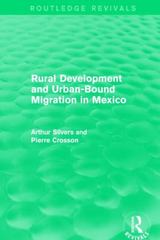Question
Lesson 2: Critical Thinking Read the following passages and answer the questions below. Evolution of Protists Scientists think that protists are the oldest eukaryotes. If
Lesson 2: Critical Thinking
Read the following passages and answer the questions below.
Evolution of Protists
Scientists think that protists are the oldest eukaryotes. If so, they must have evolved from prokaryotic cells. How did this happen? The endosymbiotic theory provides the most widely accepted explanation. That's because it is well supported by evidence.
The First Eukaryotic Cells
According to the endosymbiotic theory, the rst eukaryotic cells evolved from a symbiotic relationship between two or more prokaryotic cells. Smaller prokaryotic cells were engulfed by (or invaded larger prokaryotic cells. The small cells (now called endosymbionts)beneted from the relationship by getting a safe home and nutrients. The large cells (now called hosts)beneted by getting some of the organic molecules or energy released by the endosymbionts. Eventually, the endosymbionts evolved into organelles of the host cells. After that, neither could live without the other.
Some of the endosymbionts were aerobic bacteria. They were specialized to break down chemicals and release energy. They evolved into the mitochondria of eukaryotic cells. Some of the small cells were cyanobacteria. They were specialized for photosynthesis. They evolved into the chloroplasts of eukaryotic cells.
Evidence for Endosymbiotic Theory
Many pieces of evidence support the endosymbiotic theory. For example:
Mitochondria and chloroplasts contain DNA that is dierent from the DNA found in the cell nucleus.
Instead, it is similar to the circular DNA of bacteria.
Mitochondria and chloroplasts are surrounded by their own plasma membranes, which are similar to bacterial membranes.
New mitochondria and chloroplasts are produced through a process similar to binary ssion. Bacteria also reproduce through binary ssion.
The internal structure and biochemistry of chloroplasts is very similar to that of cyanobacteria.
Questions
1. What does the endosymbiotic theory attempt to explain?
2. What benets did the ancient endosymbionts get from their host cells?
3. What benets did the host cells get from the endosymbionts? 4. Describe two examples of scientic evidence that support the endosymbiotic theory.
5. What does the "endo" part of endosymbiosis refer to? What does the "symbiosis" part refer to?
Step by Step Solution
There are 3 Steps involved in it
Step: 1

Get Instant Access to Expert-Tailored Solutions
See step-by-step solutions with expert insights and AI powered tools for academic success
Step: 2

Step: 3

Ace Your Homework with AI
Get the answers you need in no time with our AI-driven, step-by-step assistance
Get Started


